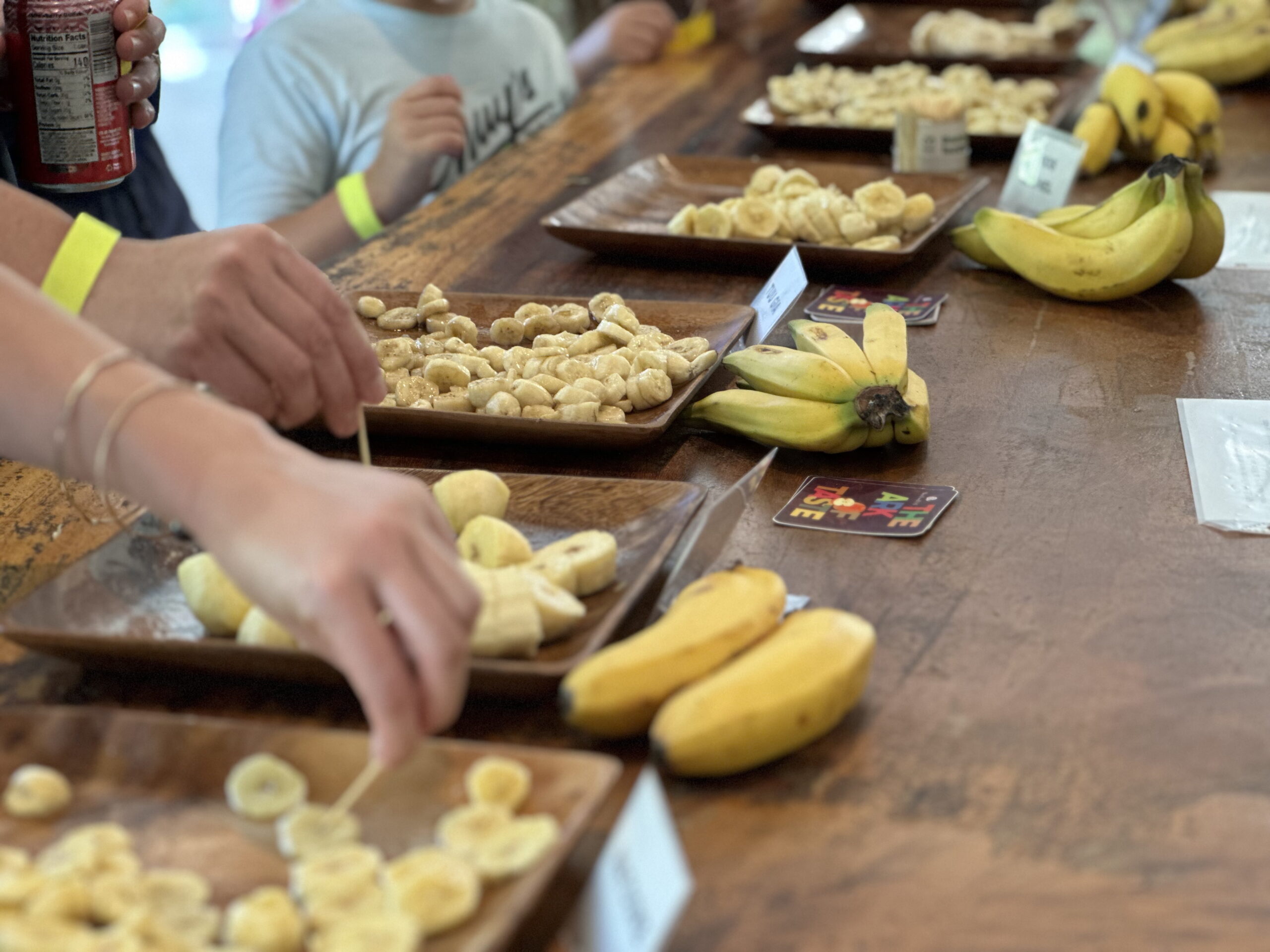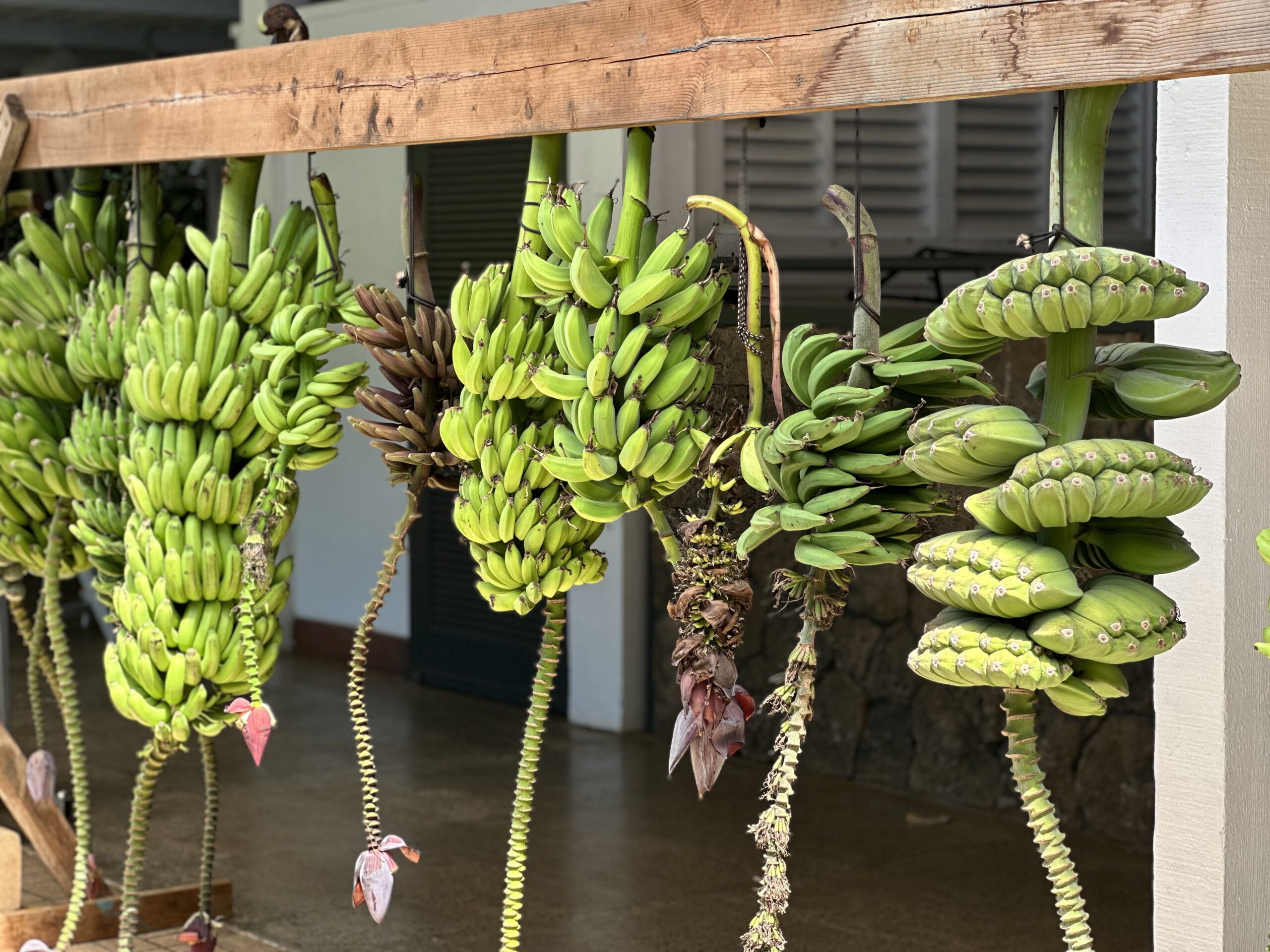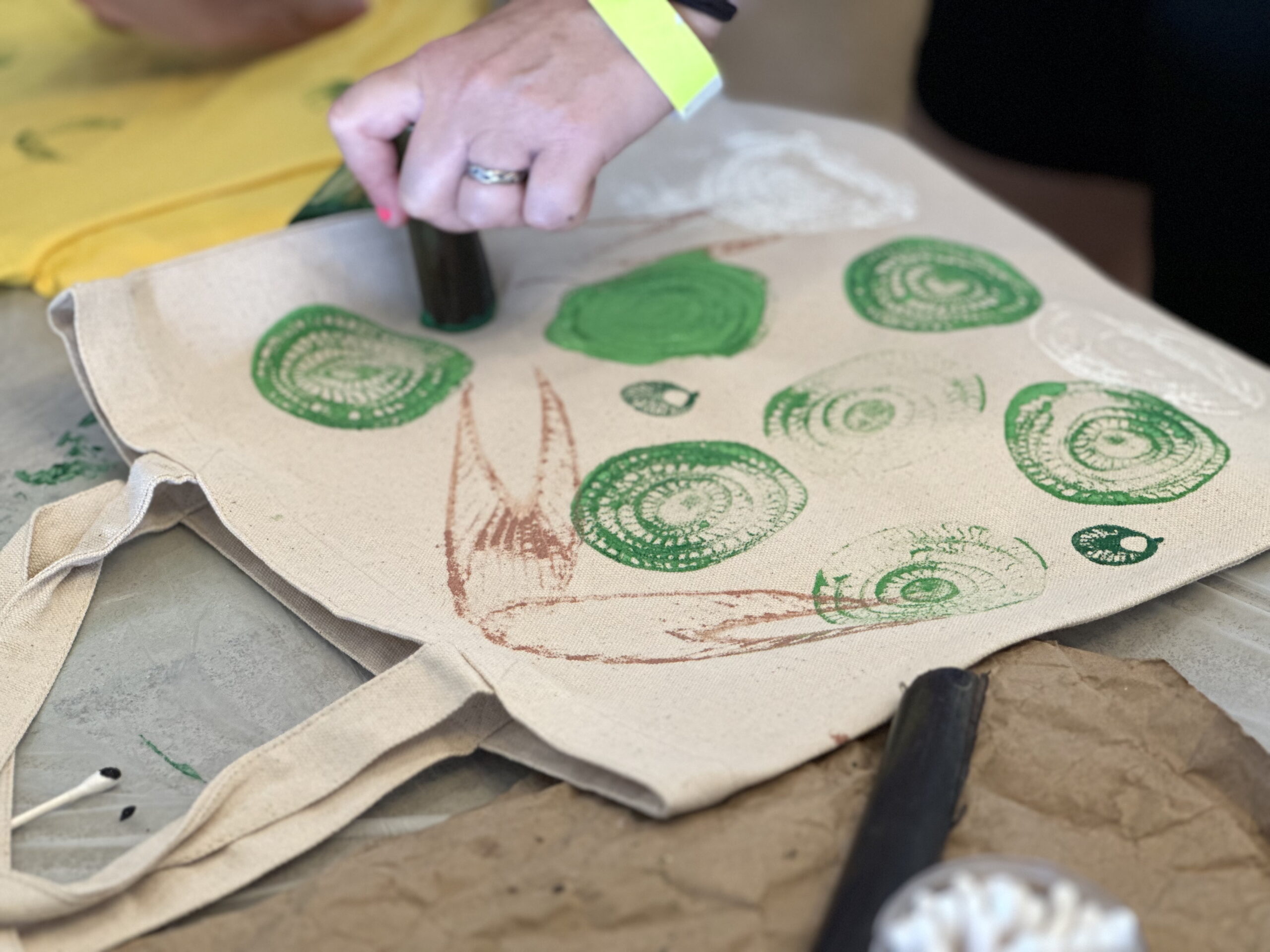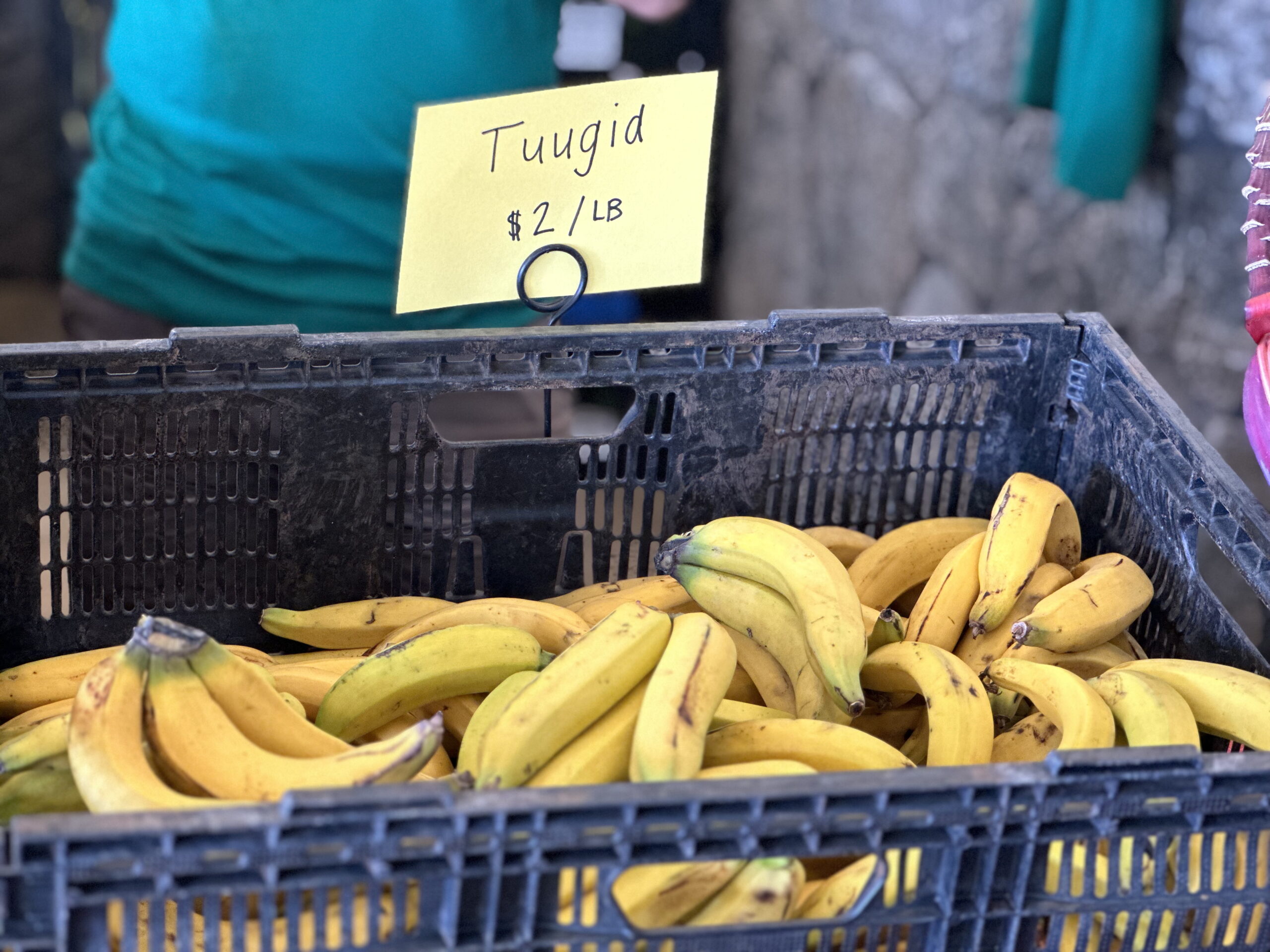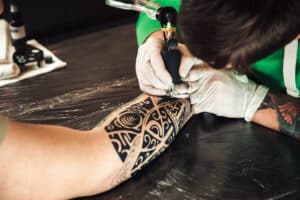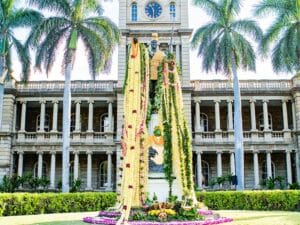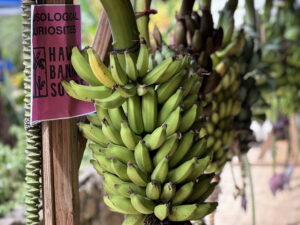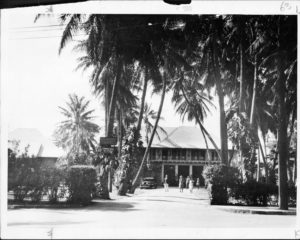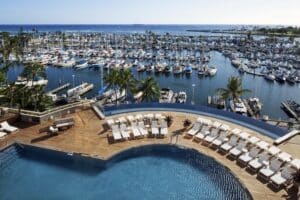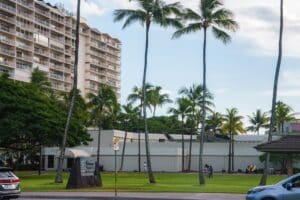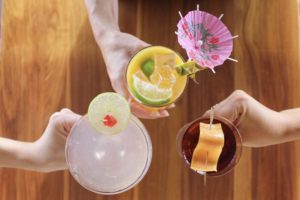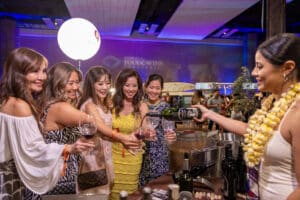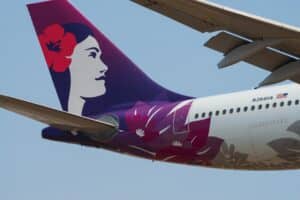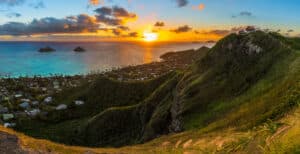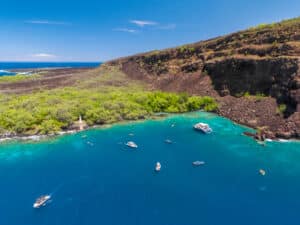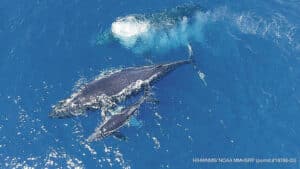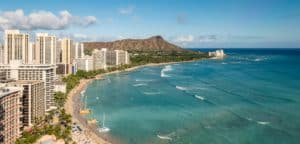Despite what you see in the grocery store, there are thousands of varieties of bananas. Hawaiʻi has at least 150 of them. If you’ve only had the ubiquitous cavendish, it’s time to expand your horizons.
On September 21, Slow Food Oʻahu will host its annual Banana Festival, or Ka Mai‘a ‘Ho‘olaule‘a. The event celebrates one of Hawaiʻi’s original canoe crops with chef tastings, banana stalk printing, a banana cook-off and a tasting station featuring a diverse selection of bananas in different flavors, colors, sizes and textures. The festival will be held at Windward Community College from 10 a.m. to 2:30 p.m., with a special presentation by Gabe Sacher-Smith, owner of Hawaii Banana Source and co-sponsor of the festival, at 1 p.m. Guests can purchase tickets online for $10 or at the door for $12. Children under 12 get in for free.
Sacher-Smith said he expects to have around 15 varieties for guests to taste, maybe more if you count the bunches galore that will be hanging around the perimeter of the festival. It really is a sight to behold.
Where do bananas come from?
Visitors to Hawaiʻi may be surprised to know that bananas – maiʻa in Hawaiian – are more local than pineapple. Neither are indigenous to the Hawaiian Islands, but bananas arrived with the first Polynesians – by way of Southeast Asia – in the 13th century, whereas pineapple – native to Brazil and Paraguay – was introduced by a Spanish advisor to the King in the early 1800s. The pineapple industry, established in the 1880s, may have been an economic boon to the islands until 2008, but bananas still flourish islandwide. According to the Hawaiʻi Department of Agriculture, Hawaiʻi grew 4.73 million pounds of bananas in 2023.
What types of bananas grow in Hawaiʻi?
The apple banana, with its signature tart green apple flavor, is the most widely known and grown in Hawaiʻi. Sacher-Smith said no other variety even comes close. But take a walk on his farm on the North Shore of Oʻahu and you will find varieties such as red cuban, rose, yangambi, racadag, namwah, ice cream, silk, goldfinger, iholena, pōpō ʻulu, saba, pineapple, mysore, maoli, bluefield, praying hands, tuu ghia, pisang lilin, williams and red burro. He even grows gros michele – the original ubiquitous banana before the Panama disease wiped out commercial production in Central and South America in the mid 20th century – and, of course, cavendish.
What can I expect to find at the Banana Festival?
There is so much to experience at the Banana Festival. Whether you are there to geek out, buy your first banana plant or just eat, the festival will keep you engaged all afternoon.
Bananas to eat
- Local chefs will serve a variety of banana dishes from sweet to savory. Ever try banana blossoms or banana stems? Here is your chance.
- The banana tasting table is your opportunity to sample over a dozen of locally-grown banana varieties.
- The Great Banana Cook-Off invites all cooks, professional and home-based, to create something innovative and delicious for a special prize.
Bananas as art
- At the mai‘a stalk printing booth you can bring a shirt or tote bag (or buy one at the festival) to stamp. Banana stalks make beautiful patterns!
- Learn a Samoan dyeing technique using kapa (traditional cloth made of bark) and purple feʻi banana sap.
- Practice lauhala (dried leaf weaving) and banana fiber weaving. Traditionally, black (ele ele) banana fiber was woven with lauhala (the dried leaf of the pandanus tree).
Learn about bananas
- Attend a one-hour lecture presented by banana expert Gabe Sacher-Smith on best growing practices, banana biodiversity, botanical history, cultivation and culinary uses of bananas.
Buy Bananas
- Purchase banana plants or bananas by the bunch.
- Also for sale: banana books, t-shirts and more.
Event Details
Date: Sunday, Sept. 21.
Time: 10 a.m. to 2:30 p.m.
Location: Windward Community College
Cost:
$10 in advance (bring printed ticket receipt for entry)
$12 at the door
Children under 12 are free.

